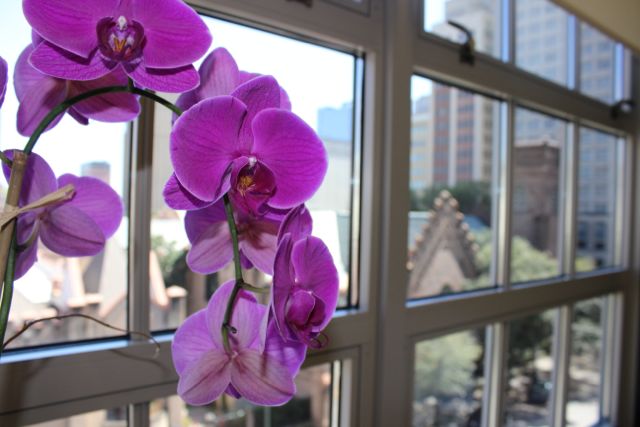
For those that love gardening and starting plants from seeds, you know the rewarding experience of watching the soil turn into an area filled with color and life. Flowers, like people, come in so many beautiful forms. They are resilient and strong with an inner desire to bloom to the fullest potential. But what happens when the soil is poor, has no nutrients, little sun, little water and no hope to thrive? The flowers never bloom and the few that do are scarce and struggling. The conditions in which they live and resources they have help to determine how these flowers will grow and make more flowers. The Urban Institute defines vulnerable populations as groups that are not well integrated into the health care system because of ethnic, cultural, economic, geographic or health characteristics. This isolation puts members of these groups at risk for not obtaining necessary medical care, and thus constitutes a potential threat to their health.
We recently had the opportunity to attend the Grantmakers in Health Conference in Austin, Texas. We were introduced to Dr. Camera Jones, the Research Director of the Social Determinants of Health & Equity at the CDC. She authored the “Gardener’s Tale” which explains how various levels of racism translates into poor health outcomes for communities. Dr. Jones shared that vulnerable populations are also defined “when health outcomes might be assigned to the group where I am assigned.” In the garden analogy, she compared two box gardens — one filled with nutrient-rich soil and given water and sunlight and another that had poor soil with no nutrients. Which box garden do you suppose produced the most beautiful and vibrant flowers? Systems change when boxes are broken and the soil is enriched with the nutrients needed to survive. Those nutrients for vulnerable people living with health disparities include access to primary medical, dental and mental health services.
So what will it take to make stronger and healthier gardens filled with blooming flowers, and how does that translate into strengthening the health of a community? Anyone with experience in community gardening will tell you it starts with a vision, a desire to make things grow, resources, and many hands. Like gardens, communities thrive when we invest dollars, time and work to change the systems that create inequity. It takes willingness to do the work and put hands in the soil to ensure that nutrients are spread and better systems are created to make the best use of those resources. Learning what makes the garden grow best is a series of trial and effort coupled with science and proven practices.
The Episcopal Health Foundation recognizes our role as just one of many “gardeners” working in partnership with communities across 57 counties. It has been said that gardening is a hobby of hope. Our hope is that our investments serve to improve health by giving organizations the tools they need to help grow, the support they need to thrive, and the encouragement needed to leverage funding for the future.